Unstable weather is bad news for most vegetables. As we head into yet another unusually wet and variable summer, we have good reasons to be wondering if we will be able to harvest some of our favourites, with less than perfect conditions. Lettuces are popular for summer dining but can easily bolt to seed if temperatures fluctuate a lot. What’s a salad-loving gardener to do?
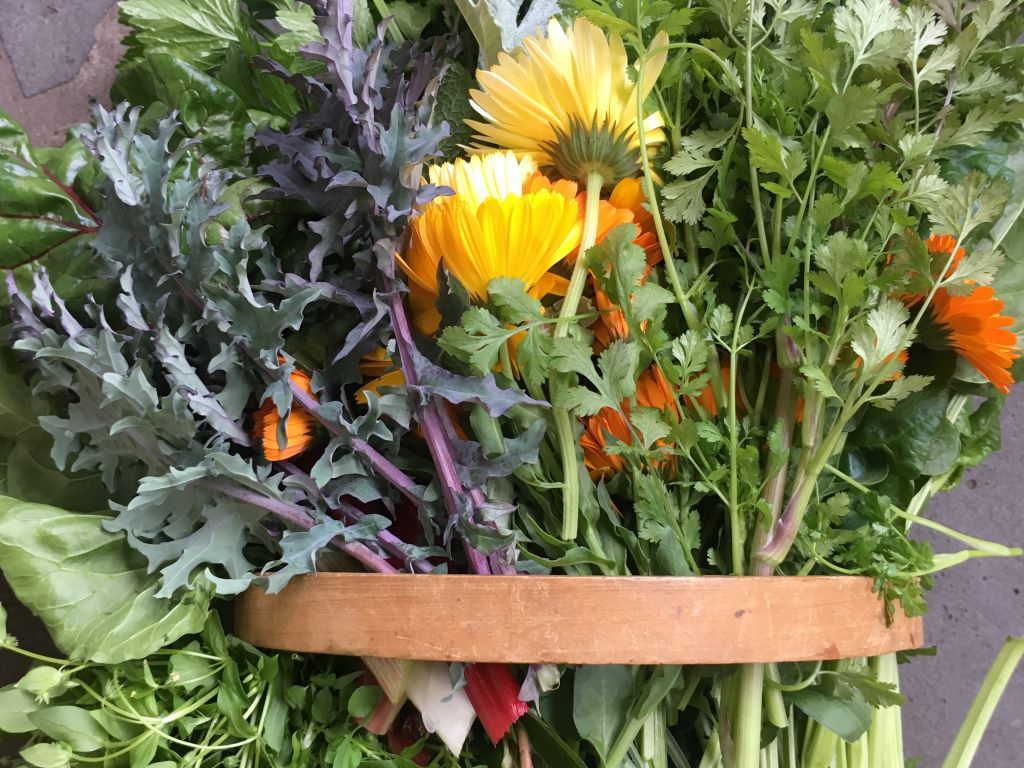
Luckily there are some salad greens we can grow that will cope with whatever this summer has to offer. In fact, they grow all year round, so are definitely worth making space for in our produce patches. They are all salad greens for shady gardens, as that’s what I’ve been growing in at my Melbourne garden for many years. I like to harvest some of each of these, tear up larger leaves and mix with other leafy greens to make a gourmet salad that doesn’t cost the earth and is super nutritious. As usual for vegetables eaten raw, wash and spin or pat dry the leaves before eating.
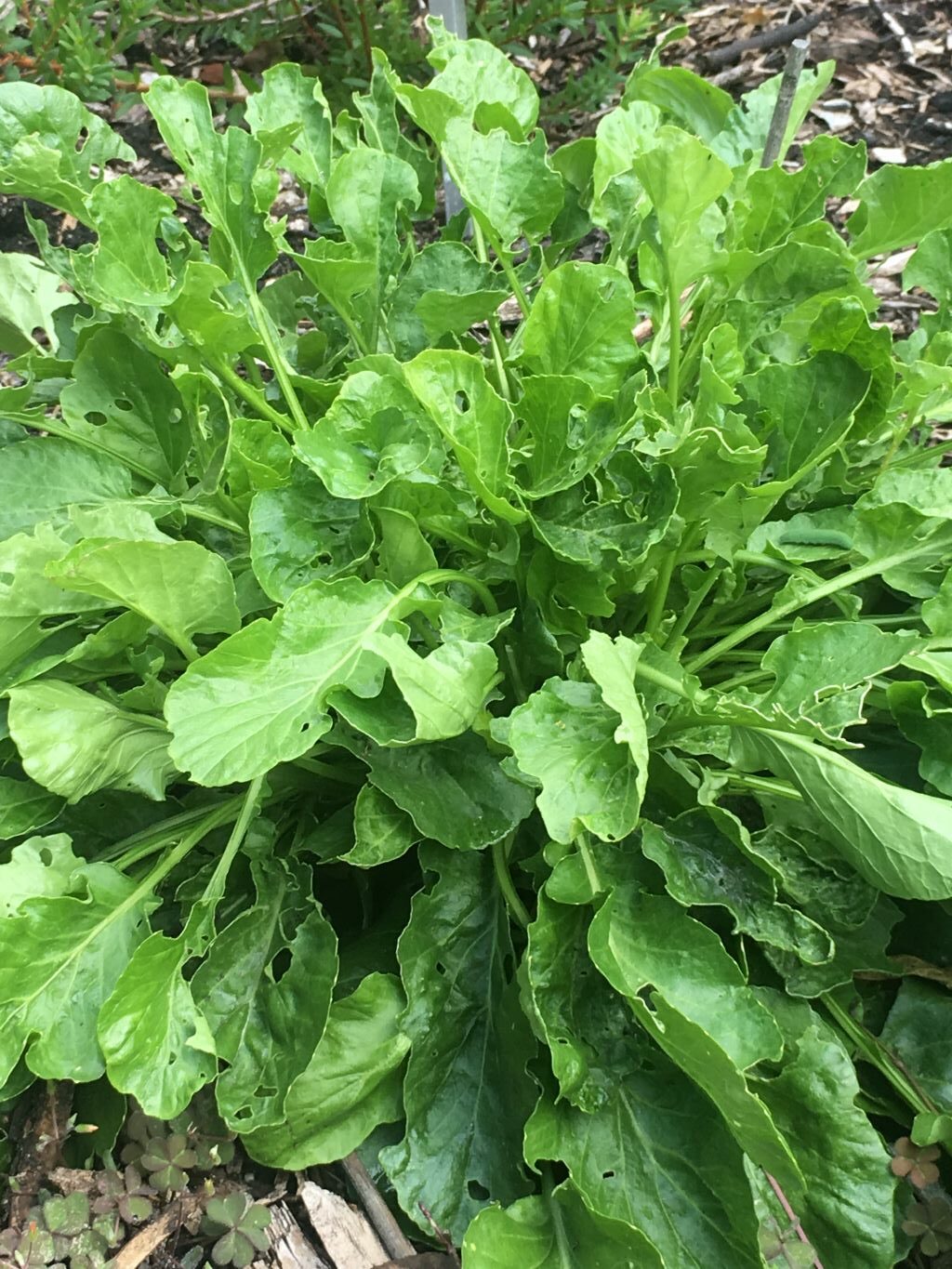
Lemon Sorrel, also called French Sorrel, Rumex scutatus, has lush green leaves around 30 cm long on 20 cm stems, but can grow bigger. It doesn’t mind some shade and the leaves will usually be softer when it grows in shade. Like most leafy greens, it likes rich soil and regular watering. The only maintenance it requires is to have the flowering stems removed when they grow in spring, as if it is left to flower it will produce less edible foliage and may also have a shorter life span. If prevented from flowering, plants can last 7 years or so, which is a lot of salad! The leaves can also be made into sorrel and potato soup popular in parts of eastern Europe or cooked as a green vegetable as the French do. You’ll usually find the plants in the herb section of nurseries, in 100 mm pots, as they are not sold as seedlings.

Red Dock, Rumex sanguineus, is in the dock family but has much softer more palatable leaves than the wild forms. It usually reached around 50 cm high. Although this plant doesn’t have much of a taste, it still contributes to a varied diet and adds colour to a salad bowl with its striking red veins and leaf stalks. This leafy green also likes rich soil and regular watering and prefers semi-shade. The young leaves are softer and tastier than the older leaves. Again, you need to remove the flowering stems when they appear in spring, although I like to let mine go to seed every 3 years or so to refresh the plants. A few new seedlings usually appear after seeds have dropped, and as long as they are moved when quite small, they do well. If you try moving them when they have more than 3 leaves, they have usually already formed a taproot and don’t like being moved. Look for these plants in the herb section of your nursery, in a 100 mm pot.
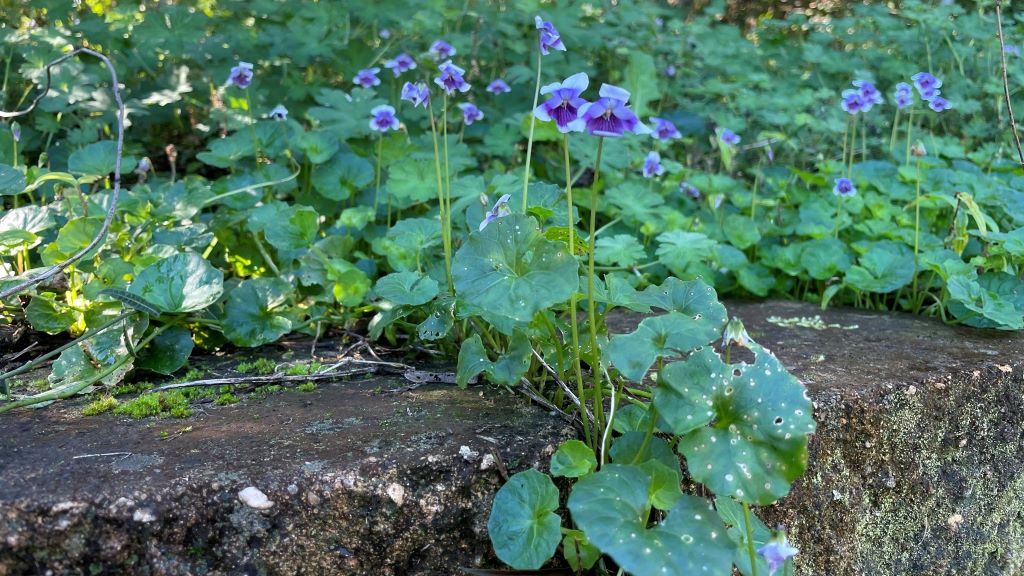
Native Violet, Viola hederacea, is not usually considered a salad plant, but both the leaves and flowers are tasty and healthy to eat. A spreading ground cover that will usually reach 15 cm high at the most, each plant will spread to around 50 cm diameter easily. If you want to eat your native violets, plant them in a spot with morning to midday sun, as in full shade they will not flower well. Regular watering and feeding will encourage lush growth and larger leaves. They can be fiddly to pick but add variety to your salad bowl so are worth it. You’ll find them in the native or the groundcover sections of nurseries, sometimes in a tube or in a 150 mm pot. On a more botanical note, the Native Violet plants we usually buy in retail nurseries have larger flowers on longer stems and also larger leaves than those we might come across in our local indigenous nursery, or the indigenous section of a retail nursery. That is because the plants popular in retail nurseries are usually Viola banksia and most native violets in indigenous nurseries are true Viola hederacea. Although both are edible, for ease of picking and eating, you’re best to buy the larger flowered Viola banksii (labelled Viola hederacea) in retail nurseries.
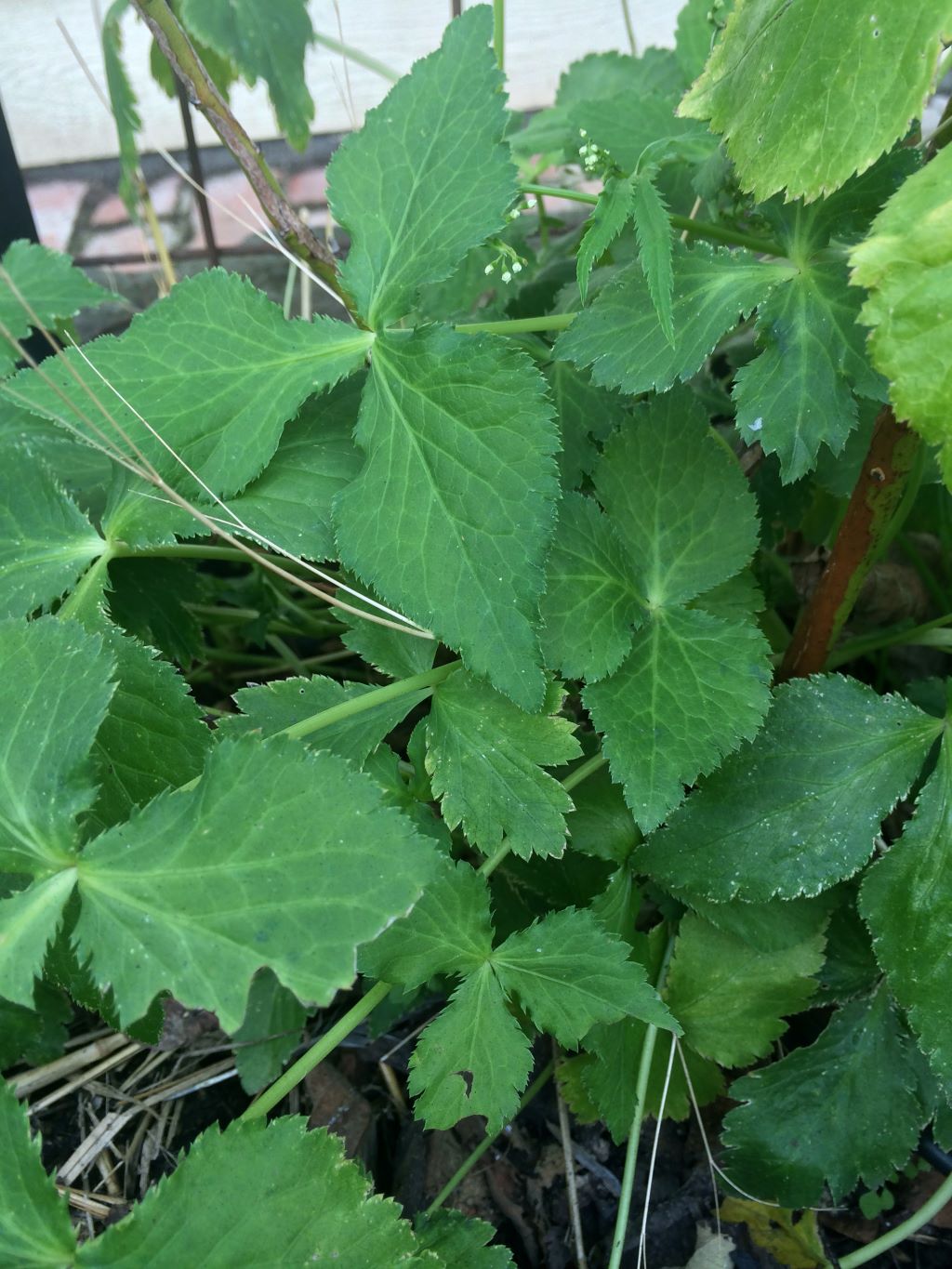
Mitsuba, Cryptotaenia japonica, also called Japanese Parsley, is another handy plant to have tucked away in a shady and damp corner of your garden. Although it usually lasts only a year or so, it self-seeds readily, os if conditions are right, once you’ve planted it you’ll always have it. Like the name suggests, it tastes a lot like parsley, but with a slight difference, and although it is not the sort of parsley flavour you’d want to add to any Mediterranean dishes, it is a useful plant to grow and use, to add diversity to your salad as well as your diet. Younger softer leaves are the ones to harvest and usually, the leaves and not the stems are used. As it can have a strong taste, I like to tear, or chop leaves up before mixing with other salad ingredients. You can also use the chopped leaves sprinkled over Asian broths or stir-fries or rolled into sushi. Mitsuba is usually best found as seeds from online seed sellers.
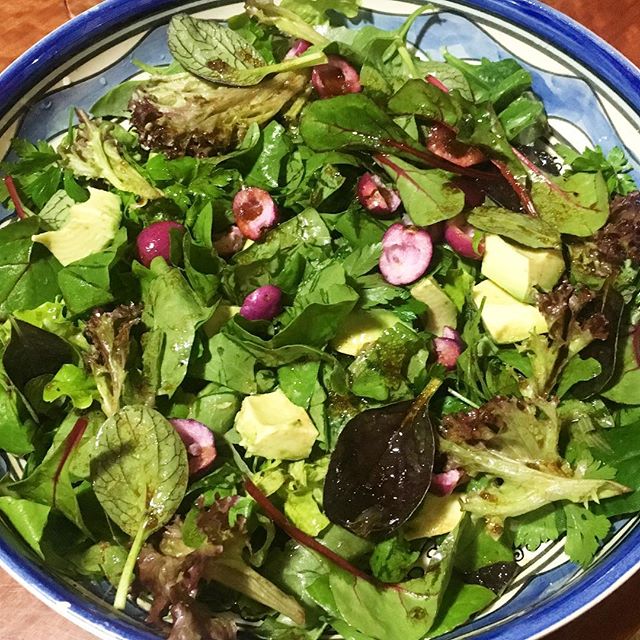
Hopefully you’re inspired to hunt out these more unusual but worthwhile salad greens and make space for them in your garden. All of them can be grown in the ground or in pots. If none of these take your fancy, or you have a super sunny produce patch, then there are other perennial salad greens you can find if you are prepared to eat outside the square!


Recent Comments